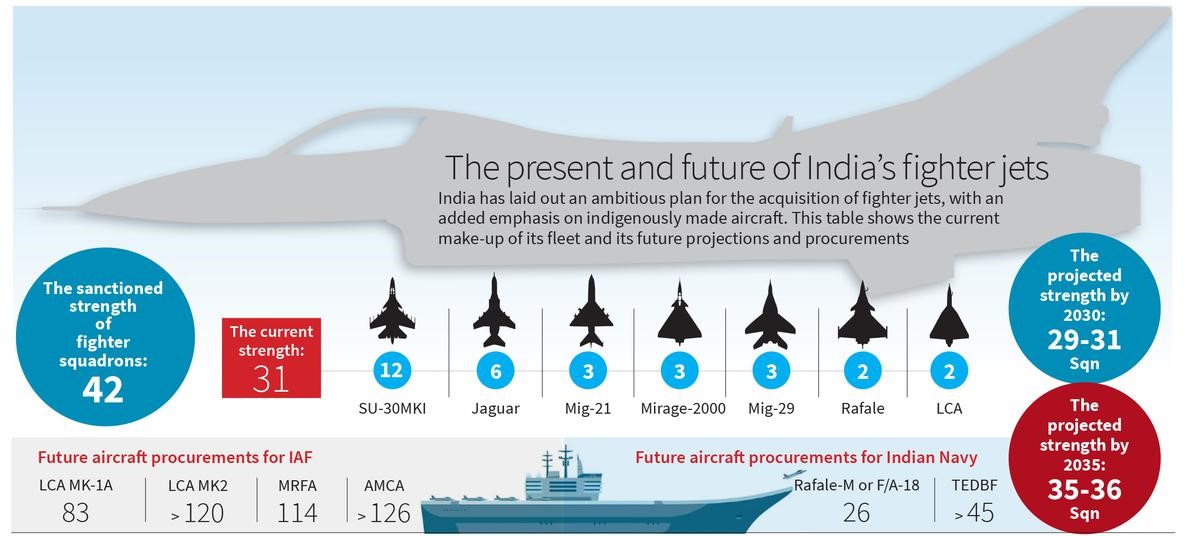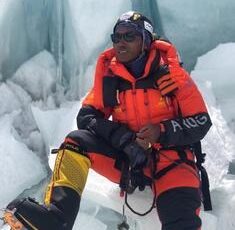IAF Modernization: Challenges And Strategic Imperatives
Syllabus:
GS 3:
- Security challenges and their management
- Technological advancement and research imperatives.
Why in the News?
China’s unveiling of two new stealth fighter jets and other high-technology platforms has underscored its technological supremacy. This highlights the widening gap between the People’s Liberation Army Air Force (PLAAF) and the Indian Air Force (IAF), which continues to struggle with modernization delays.
Chinese Military Modernization
- Fifth and sixth-generation advancements: China has fielded the J-20 and J-35 fifth-generation fighters, and videos of two stealth jets with advanced configurations have emerged, hinting at sixth-generation capabilities.
- Largest aviation force: A U.S. Congressional report highlights that China’s PLAAF and PLAN Aviation together constitute the largest aviation force in the Indo-Pacific region, rapidly achieving S.-level standards.
- Technological superiority: Apart from the fighter jets, China has showcased advancements like a supersonic civil jet prototype, the world’s fastest bullet train, and cutting-edge naval vessels, demonstrating its comprehensive military and civilian technological prowess.
- Rapid development: The J-20 and J-35 are being produced at a phenomenal rate, making China the only country besides the U.S. to field multiple fifth-generation fighters.
- Strategic focus: These advancements enable China to strengthen its regional dominance, projecting power in the Indo-Pacific and beyond.
The IAF’s Modernization Challenges
- Squadron strength: The IAF operates only 31 fighter squadrons against the sanctioned strength of 42, and several existing aircraft, including MiG-21s, are nearing the end of their lifecycle.
- Delayed deliveries: Delivery of the LCA-Mk1A is delayed due to supply chain disruptions, and major projects like the LCA-Mk2, AMCA, and MRFA are years away from operationalization.
- Aging fleet: By the 2030s, the Mirage-2000s, MiG-29s, and even early batches of Su-30MKIs will start retiring, further reducing squadron strength.
- Dependence on imports: The IAF remains reliant on foreign platforms like the Rafale and Su-30, while indigenous efforts face technological and logistical hurdles.
- Uncertain timelines: The lack of clarity on the delivery schedules for key projects like the MRFA and AMCA jeopardizes the IAF’s modernization goals.
Aero-Engine Dependency
- Critical vulnerability: India’s dependence on imported engines remains its Achilles heel. Current and upcoming aircraft, including the LCA-Mk2 and AMCA, will be powered by engines either directly imported or co-produced.
- Indigenous efforts: Despite efforts like the agreement between HAL and GE for manufacturing F-414 engines, India is far from achieving self-reliance in aero-engine development.
- Strategic reliance: The dependence on S. and French technologies for engines and critical components continues to limit India’s ability to claim full self-reliance in defense.
- Co-development plans: Initiatives like co-developing a 110kN engine with France offer hope, but they do not eliminate dependency on foreign expertise.
- Impact on indigenization: Without a robust indigenous engine program, India’s dream of a fully indigenous fighter fleet remains unfulfilled.
What are Fifth-Generation Fighter Jets?
- Multi-mission capability: Designed for versatile missions such as air-to-air combat and ground attack.
- Stealth technology: Equipped with plain surfaces, specially shaped exhaust nozzles, and engines embedded in the body to minimize heat signatures.
- Advanced radars: Include systems to detect the aircraft’s own radar emissions for enhanced situational awareness.
- Limited operators: Few nations possess fifth-generation fighters, with active models including the F-22 Raptor and F-35A Lightning II (USA), J-20 Mighty Dragon (China), and Sukhoi Su-57 (Russia).
What is Advanced Medium Combat Aircraft (AMCA)?
- About
- India’s indigenous fifth-generation multirole fighter jet, larger than existing IAF aircraft.
- Positions India among a select group of nations with homegrown fifth-generation fighters.
- Organisations Involved
- Designed by the Aeronautical Development Agency (ADA) under DRDO.
- Manufacturing will be handled by Hindustan Aeronautics Limited (HAL).
- Features
- Stealth: Advanced stealth capabilities to evade enemy radar detection.
- Fuel & Weapons:
- Internal fuel tank with 6.5-tonne capacity.
- Internal weapons bay for diverse indigenous and external weapons.
- Engine Variants:
- AMCA Mk1: Powered by the GE414 engine (90kN class) from the USA.
- AMCA Mk2: To feature an indigenous 110kN engine developed by GTRE in collaboration with a foreign partner.
Way Forward
- Accelerate indigenous projects: Fast-track the development and delivery of indigenous platforms like the LCA-Mk2, AMCA, and TED-BF to reduce reliance on imports.
- Strengthen partnerships: Leverage partnerships with France and the U.S. for co-development of advanced technologies, especially aero-engines.
- Streamline procurement: Address bureaucratic delays and adopt a transparent procurement process for projects like the MRFA to expedite inductions.
- Enhance R&D: Invest in defense R&D to build a robust indigenous aviation industry, focusing on critical areas like engine development.
- Strategic planning: Develop a long-term modernization roadmap aligned with operational requirements and geopolitical challenges to ensure IAF’s combat readiness.
Conclusion
The IAF’s modernization is at a critical juncture, with challenges ranging from aging platforms to technological gaps and procurement delays. Bridging these gaps requires a focused approach toward indigenous development, timely acquisitions, and enhanced strategic partnerships to secure India’s position as a dominant force in the Indo-Pacific.
Source The Hindu
Mains Practice Question
Examine the challenges faced by the Indian Air Force in its modernization journey. Suggest measures to overcome these challenges and ensure operational readiness in the face of evolving geopolitical threats.





